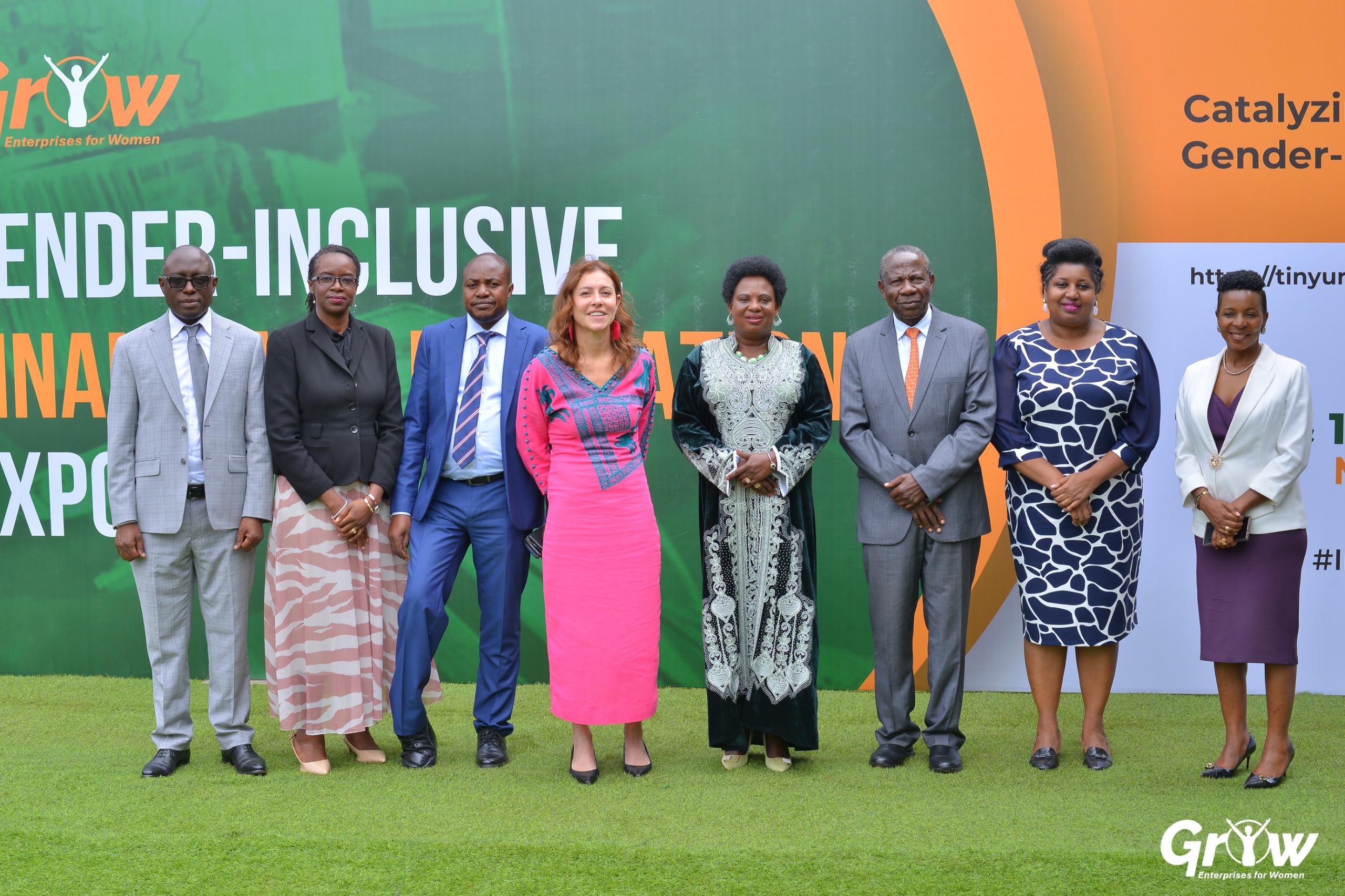The 3rd of June every year is such a big day that Christians from and outside Uganda gather at Namugongo shrines to commemorate and also celebrate the brevity of the 45 believers that decided to die for their religion other than abandoning it.
Today marks the 137th year since the said martyrdom took place at Namugongo where tens of thousands of pilgrims have gathered today to celebrate the lives of the martyrs that were executed for the love of their religion. However, what exactly happened and why did the Kabaka of Buganda ordered for their execution?
Here is a brief history of the greatest martyrdom in Uganda and Africa at large.
Why the Martyrdom?
For starters, religion was introduced in East Africa in 1877 during that time it was embraced by then Kabaka of Buganda Muteesa I Mukaabya Walugembe Kayiira. However, after his death in 1884, his son who succeeded him Kabaka Danieri Basamula-Ekkere Mwanga II Mukasa launched a campaign to start executing Christians whom he said were honouring and respecting God more their Kabaka (king).
Kabaka Mwanga was concerned with the growing influence of Christianity and the rise of a new class of officials, distinct from the traditional territorial chiefs, who were educated, had a religious orientation, and wished to reform Ganda society. Other books say that because of Christianity many members of the royal court started refusing to yield to Mwanga’s religious demands, which he saw as insubordination.
According to the letters written by the French missionary priest Lourdel who witnessed the event, the principal cause was Mwanga’s feeling of being despised by the literate Christians who claimed a superior knowledge of religion.
Lourdel also noted that Mwanga who by tradition had the power of life and death over his subjects, was angered because he had many wives, and he didn’t want to give up polygamy. Yet the new religion demanded that marriage is between one man to one woman and Kabaka Mwanga didn’t want to give up the many wives he had. In addition, some of the Baganda people were disobeying his orders and abandoning their duties such as hunting, farming, making traditional bark clothes outfits, attending to the livestock, and taking care of the palace to mention a few, in favour of learning the new religion. So Kabaka Mwanga became afraid that he was going to lose his kingdom, the Buganda Kingdom, to the new religion.
The execution and what really took place?
Yusuf Rugarama, Nuwa Serwanga and Makko Kakumba were the first Uganda martyrs. The execution of the three was done on 31 January 1885, just a year after Kabaka Mwanga II had succeeded his father. Later on that year, Bishop Hannington, on returning to Uganda, was also murdered.
Joseph Mukasa was the first Catholic Uganda Martyr. His execution happened in January under the suggestions of Katikkiro Mukasa. It’s alleged that Katikkiro Mukasa received a hint that Joseph Mukasa would become a king. Katikkiro, therefore, developed jealousy, grudge, and hatred towards Joseph Mukasa. It also alleged that he was killed because he had pleaded with the king not to kill Bishop James Hannington. Joseph was beheaded and burnt at Nakivubo swamp, in the Kampala City centre.
On 25th May 1886 at Munyonyo, Mwanga condemned Christians to death with the Spearing and condemning to death Denis Ssebuggwawo. He (Denis) was killed on the following and the same day as Andrew Kaggwa.
On the 26th of May 1886, as a ceremonial opening of the death march, Pontian Ngondwe was speared by Mukaajanga, the chief executioner, his corpse hacked and pieces scattered to all directions at Ttabataba, now known as Ttaka Jjunge, about a mile from Munyonyo on the way to Mengo.
In the morning of 27th May 1886 at Mengo, Athanasius Bazzekuketta who was thirsty for martyrdom, volunteered to be executed at a spot on the foot of Mengo Hill where Joseph Mukasa Balikuddembe, his leader had been martyred earlier.
On the same day, while at Old Kampala on his way from Mengo to Namugongo, Mathias Kalemba Mulumba refused to walk further in demand for execution. His hands were cut off first, fresh removed from his back and roasted then his legs cut off, blood vessels and veins tired, and traditional herbs applied to wounds to stop him from over bleeding. He died three days later from thirst.
Tired of their necks and feet to another by the cords and slave yokes or by the stocks, the Uganda martyrs had to walk for over ten miles to reach Namugongo. But about a mile from their destination, Gonzaga Gonza who could hardly keep up with the pace collapsed at Lubaawo hill, he was speared at about midday on 27th May 1886.
In Namugongo, the Uganda martyrs were confined for about a week before execution, in that time, the executioners went about with preparatory activities like collection of enough firewood and cutting of reeds to be used in the event, this took until the 2nd of June.
The de-day
On the 3rd of June 1886, on the feast of the Ascension, Charles Lwanga became the first victim of martyrdom, Ssenkoole, the Guardian of the sacred fused had singled him out, following the traditional procedure of a ritual execution, which prohibited his (Ssenkoole) presence at the actual scene of a large execution but rather expected to select one victim and burn him apart from the others.
Ssenkoole took Charles Lwanga to a spot about fifty yards from the road, he (Charles) was allowed to arrange his own deathbed of firewood. Then wrapped in reeds laid on the pyre and was burnt slowly from the foot to the head at about midday, 3rd June 1886.
Achilles Kiwanuka, Adolphus Mukasa Ludigo, Ambrose Kibuuka, Anatoli Kiriggwajjo, Bruno Sserunkuuma, Gyavira, James Buzaalilyawo, Kizito, Luke Banabakintu, Mbaaga Tuzinde, Muggaga and Mukasa Kiriwawanvu are the twelve catholic that were burnt in the great Namugongo martyrdom together with thirteen Anglicans and six other prisoners that were on death sentence for other offences other than religion. Kizito was the youngest of the martyrs. He was burned alive on the order of Kabaka Mwanga.
Martyrs killed outside Namugongo include; Joseph Mukasa Balikuddembe and Athanasius Bazzekuketta, at the city of Kampala (St. Balikuddembe Market), Denis Ssebuggwaawo and Andrew Kaggwa, killed at Munyonyo, Pontian Ngondwe killed at Kyamula (Ttakajjunge), Matthias Kalemba Mulumba killed at Old Kampala, Noe Mawaggali killed at Kiyinda-Mityana, Gonzaga Gonza killed at Kamuli-Lubaawo and lastly John Mary Muzeeyi killed at Mmengo-Kisenyi.
After the execution, the executioners remained around the scene adding more firewood to the fires to ensure that the victims’ remains were consumed to ashes, however, this didn’t happen. The remains of the Christians were left unburied because movements around Namugongo (the execution ground) were rendered unlawful and also victims of the king’s anger were considered unworthy of decent burials; persons that buried such victims were considered traitors.
Do you have a story in your community or an opinion to share with us: Email us at editorial@watchdoguganda.com














